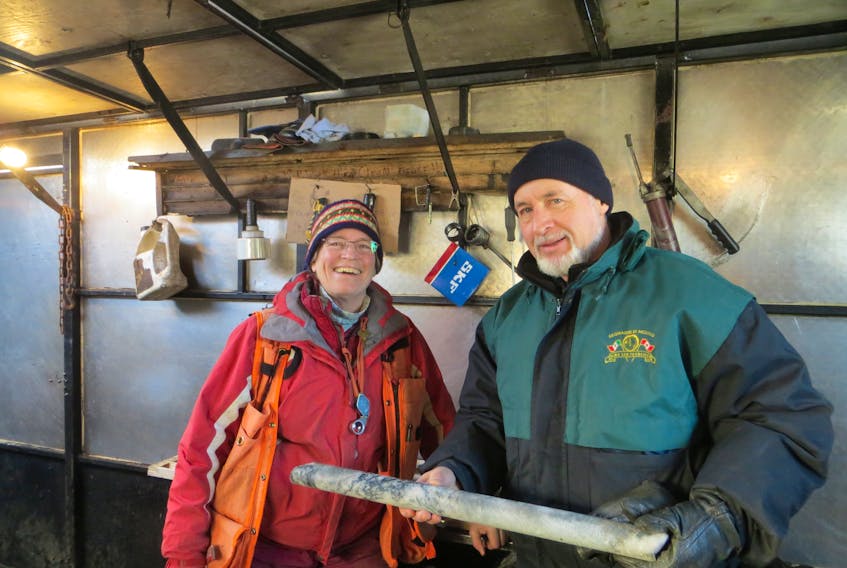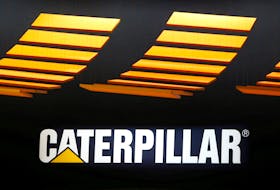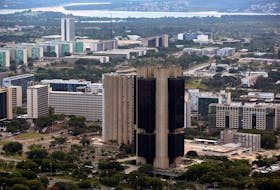It’s a gold reserve glittering with job potential but the proposed Valentine gold mine in central Newfoundland is several years away.
The undertaking was registered this week for environmental assessment under the provincial Environmental Protection Act.
Marathon Gold Corp. is the Toronto-based gold exploration company proposing to develop the gold mine roughly 55 kilometres southwest of Millertown in central Newfoundland. The net present value of the project is about $500 million USD.
“It’s a major gold deposit, certainly the largest in Newfoundland and Atlantic Canada and it really stands out as one of the top projects in North America,” president and CEO Phillip Walford said in a telephone interview from Toronto Wednesday.
A preliminary feasibility study is underway right now. The final feasibility study is another year away. Once that’s done and production money is in hand, the project would move on to detailed engineering and construction planning.
“It’s a major gold deposit, certainly the largest in Newfoundland and Atlantic Canada..." — Phillip Walford, Marathon Gold Corp. CEO and President
Marathon sold a two-per-cent royalty to Franco-Nevada for $18 million recently, which leaves Valentine cashed up for a while, Walford said.
But he said interest in investing in the gold industry has fallen off a bit of late.
“Some people in the market can’t get the money,” Walford said. “It doesn’t seem to be there right now.”
Some are waiting on higher gold prices.
But there’s also a lot of investment money tied up in cannabis.

“There’s a lot of it in weed right now. It’s taken some of our smoke,” said Walford, who added it’s a difficult cycle, but it will change.
“It will turn around. It always does.”
If it goes ahead, Valentine would employ 450 people over a dozen years. Construction of the permanent camp would create another 200 jobs. Every mine site job could create another five in the region, Walford said.
The Valentine project includes four potential mining areas: Leprechaun, Sprite, Marathon and Victory deposits.
The majority of the resources occur in the Marathon and Leprechaun deposits, which also have resources below the pit shell. Gold mineralization has been traced down more than 350 metres vertically at Leprechaun and almost a kilometre at Marathon, according to the Marathon’s website.
The four near-surface, mainly pit-shell constrained, deposits have resources totalling 4.2 million ounces of gold.
Those four deposits outlined to date occur over a 20-kilometre system of gold-bearing veins, with much of the 24,000-hectare property unexplored, the company says.
Only 15 per cent of the property has been explored so far.
Marathon currently maintains a 30-person all-season camp at the property.
According to the environmental assessment bulletin, standard surface mining techniques will be used in open pit construction and operation. The project will involve waste rock disposal piles; crushing and stockpiling areas, heap leach processing (involving a series of chemical reactions absorbing certain minerals through a drip system), conventional milling, processing facilities and tailings management areas.
It will also require personal accommodations and supporting infrastructure including roads; power lines, buildings, as well as water and effluent management facilities.
The construction period would last 18-24 months. Once operating, the mine would run 24 hours per day, seven days a week on a 12-hour shift basis.
Municipal Affairs and Environment Minister Graham Letto is to make his final decision by May 31 and public comments close May 21.
Walford said it’s hard to determine what issues the provincial and federal governments will zero in on, but obviously they’ll have to be addressed.
“It’s been great, a long haul for us — eight years through tough financial times to get the project where it is now,” he said. “It’s a real thrill for all of us involved in the project to reach this point.”
Support through the provincial junior exploration programs over the years from the province has contributed $1.5 million.
RELATED









